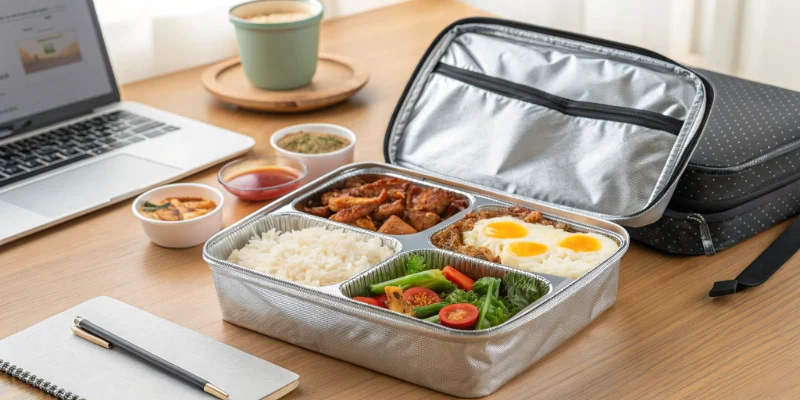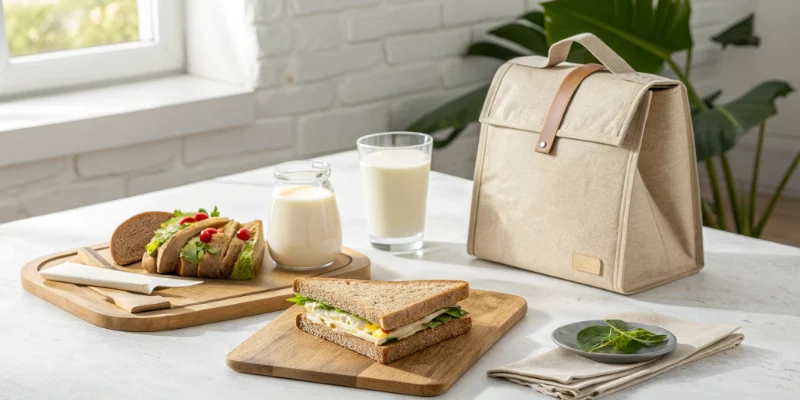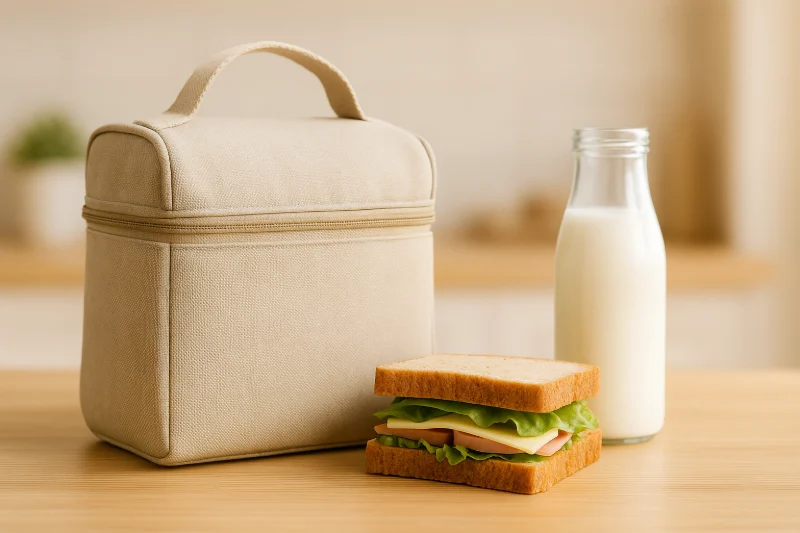
Every time we go camping, spend a day at the beach, or have a family picnic, we often find ourselves hesitating over one question: which type of cooler should we bring? A large and heavy one is inconvenient to carry, while a lightweight one may not keep things cold long enough. Some people prefer the convenience of foldable soft coolers, while others rely on hard coolers that can keep ice frozen for several days. What seems like a small accessory can actually make a big difference to the whole travel experience. In the following sections, we’ll compare soft and hard coolers in terms of portability, insulation duration, and durability to help you understand their key differences and make choosing easier.
Soft VS Hard Cooler: What’s the Difference? Soft coolers are known for their light weight and flexibility, making them ideal for short trips or everyday use. Hard coolers, on the other hand, are characterized by their solid build and longer insulation time, making them more suitable for long-distance travel or outdoor environments. Both types have their own strengths in structure, capacity, cooling duration, and portability, and the choice between them depends on the specific scenario and individual needs.
After understanding the basic differences between soft and hard coolers, it becomes easier to see how they perform in real use. In the following sections, we’ll compare them one by one in terms of portability, insulation performance, and durability to help you find the type that best fits your needs.
A soft cooler bag usually features a flexible multilayer construction consisting of an outer fabric layer, an insulation layer, and an inner lining. The outer layer can be made from different types of fabric depending on usage, such as Oxford cloth, nylon, Tyvek, washable kraft paper, or non-woven fabric. The middle layer is typically foam material that helps maintain cold temperatures, while the inner layer often uses aluminum foil or PEVA for waterproof and thermal insulation. Some promotional models omit a separate inner lining and retain only an aluminum layer to reduce cost. Overall, the design strikes a balance between lightness and insulation performance, making it suitable for daily use, carrying lunch, or short trips.
Soft cooler bags are popular for their light weight, flexibility, and versatile designs, making them especially suitable for daily use and short trips.
Lightweight and portable: Soft structure and low weight make them easy to carry by hand or shoulder.
Foldable storage: Can be flattened or folded when not in use to save space.
Variety in design: Available in different fabrics, sizes, and styles to suit various needs.
Flexible pricing: Covers a wide range from basic promotional types to high-end insulated models.
Shorter insulation duration: Thinner insulation layers, generally suitable for a few hours of use.
Limited wear resistance: Surfaces may wear or deform under long-term heavy loads or friction.
Weaker structure: The flexible design improves portability but makes it less suitable for stacking or heavy storage.

Hard coolers are favored for their solid shells and thick insulation walls, providing better performance in cooling retention and impact resistance.
Long-lasting insulation: Thick walls and high-density foam greatly extend ice retention time.
Sturdy construction: Strong resistance to pressure and impact, ideal for harsh outdoor use.
Large capacity: Can store more food and drinks, suitable for long trips or group activities.
Good sealing: Lid locks and rubber gaskets reduce cold air loss effectively.
Heavy and bulky: Larger weight and size make transport and loading less convenient.
Takes up more space: Fixed shape limits storage flexibility.
Higher cost: Reinforced structure and materials increase cost, less suitable for low-budget users.
| Feature | Soft Cooler | Hard Cooler |
|---|---|---|
| Portability | Lightweight, foldable, and easy to carry | Heavier but stable, some with wheels |
| Insulation Duration | About 4–8 hours, longer with ice packs | About 1–3 days, thick insulated walls |
| Durability | Depends on material quality | Hard shell, strong impact resistance |
| Storage | Can be flattened for compact storage | Fixed size, takes up more space |
| Capacity | Small to medium, for light use | Medium to large, ideal for group use |
| Cleaning | Wipe clean, light brushing for stains | Washable, easy to maintain |
| Price Range | Flexible pricing with various options | Higher cost, mid-to-high-end segment |
| Weight | Around 0.5–1 kg (empty) | Around 3–10 kg (empty) |
| Overall Suitability | Daily use, short trips, lunch carrying | Camping, fishing, road trips |
Soft Cooler: Lightweight and easy to carry by hand or shoulder, can be folded when not in use to save space.
Hard Cooler: Heavier and less convenient to move; some models include wheels or handles for easier transport, suitable for vehicle or stationary use.
Soft Cooler: Typically keeps items cool for about 4–8 hours and can extend up to 12 hours with ice packs.
Hard Cooler: Thicker insulation; standard models retain cold for 1–2 days, while premium rotomolded versions can last up to 3 days.
Soft Cooler: Made from flexible materials with moderate abrasion resistance; may show wear under heavy load or frequent friction.
Hard Cooler: Strong structure with excellent impact and pressure resistance, ideal for long-term outdoor use.

Soft Cooler: Can be folded or flattened for compact storage, taking up minimal space.
Hard Cooler: Fixed body cannot be compressed, requiring more storage room.
Soft Cooler: Generally small to medium capacity (about 5–30 L), ideal for personal or small-family use.
Hard Cooler: Larger capacity (about 20–100 L), suitable for group trips or long ice storage.
Soft Cooler: Can be wiped with a damp cloth or gently brushed for tougher stains; easy to maintain.
Hard Cooler: Can be rinsed or wiped; smooth surface cleans easily and dries quickly without odor retention.
Soft Cooler: Entry-level models range from US $10–30, varying by material and size, ideal for daily or promotional use.
Hard Cooler: Typically US $50–150, higher cost but longer cooling duration, suitable for outdoor and travel needs.
Soft Cooler: Weighs about 0.5–1 kg when empty; portable and convenient for everyday use.
Hard Cooler: Weighs about 3–10 kg when empty; weight increases with capacity and wall thickness.
Soft Cooler: Best for commuting, lunch carrying, picnics, and short trips.
Hard Cooler: Designed for camping, fishing, road trips, or any situation requiring extended cooling performance.
| Cooler Type | Typical Ice Retention | Ideal Use Duration | Notes |
|---|---|---|---|
| Soft Cooler | 4–8 hours | Day trips / Lunch use | Lightweight design, thinner insulation layer |
| Hard Cooler | 1–3 days | Camping / Fishing / Long outdoor use | Thick PU foam with airtight seal for longer retention |

Soft Cooler: Suitable for short-term occasions such as daily commuting, beach outings, grocery shopping, or family picnics.
Hard Cooler: Better suited for activities requiring extended cooling time, such as camping, hunting, fishing, or long road trips.
| Scenario | Recommended Type | Reason |
|---|---|---|
| Daily Commute / Lunch | Soft | Lightweight and easy to carry for short-term use |
| Beach Trip / Picnic | Soft | Compact and simple to clean after use |
| Road Trip / RV Use | Hard | Longer insulation time, more stable structure |
| Fishing / Hunting | Hard | Durable and large capacity for outdoor storage |
| Tailgating / Events | Soft or Hard | Depends on group size and storage duration |
Soft Cooler: Avoid soaking for a long time. It is recommended to wipe with a damp cloth or gently brush for cleaning. After use, keep it ventilated and dry to prevent odor buildup.
Hard Cooler: Clean the interior and lid regularly with clean water or mild detergent. After cleaning, keep the sealing strip dry to prevent mold and aging.
Always store your cooler fully dry and open to prevent odor or mold growth.
If you prioritize portability and flexibility, a soft cooler is your best choice for daily use or short trips. If durability and long ice retention are more important, a hard cooler will perform better for extended outdoor use. For frequent travelers or outdoor enthusiasts, owning both types ensures you’re ready for any situation.
At Yanxin Bag, we manufacture a wide range of custom soft cooler bags, insulated lunch totes for global contractors and brand buyers. Contact Yanxin Bag today to discuss your custom insulated bag project and find the ideal solution for your business needs.
Looking for a reliable lunch bag that keeps your meals hot or cold?
This article explains the construction and function of insulated lunch bags — covering heat‑retention mechanisms, variations designed for hot versus cold foods, portability and capacity considerations, and how to choose the right style for different food types and use scenarios.
Trying to understand how an insulated bag differs from a true cooler bag?
This article systematically compares the key differences — covering construction and cooling materials, intended use and performance, comparison of use‑cases (such as picnic, travel, daily commute), weight versus portability, as well as cost and lifespan considerations — helping you make an informed choice based on your actual needs.
Want to understand how cotton mesh bags impact branding and user experience?
This article lays out the full process and key considerations for custom cooler bags — covering material choices suitable for printing and branding, how to select the right size and style, comparing printing versus embroidery effects, lead time and minimum quantities for production, and how brands can leverage cooler bags in promotional campaigns.
Want to get the most out of your cooler bag’s performance?
This article gives a step‑by‑step guide to using a cooler bag correctly — covering pre‑chilling, packing items, arranging ice packs or coolants, sealing and storage position, monitoring cooling effectiveness during use, handling temperature changes, and cleanup and drying afterward to ensure best cooling results.
Need advice on keeping your cooler bag clean and hygienic?
This article explains the cleaning process and maintenance methods for cooler bags — covering recommended types of cleaning agents, techniques for cleaning interior and exterior materials, drying and anti‑mold treatment, stain removal and odor elimination, as well as how to prepare the bag for long‑term storage, ensuring the cooler bag remains durable and safe for use.
Get a free quote and expert consultation today. Let's bring your brand vision to life.
Answer: A hard cooler, especially one with thick walls and an airtight seal, can retain ice for approximately 1–3 days under normal conditions, whereas a soft cooler typically keeps ice for about 4–8 hours (or longer with added ice packs).
Answer: A standard soft cooler usually maintains cold food or drinks for around 4–8 hours; if you use extra ice or gel packs and keep it shaded, it may extend toward 10–12 hours, but it is generally not designed for multi-day ice retention like hard coolers.
Answer: Yes, most reusable cooler bags are made from durable materials like nonwoven fabric, canvas, or RPET, making them environmentally friendly alternatives to single-use plastic bags.
Answer: Hard coolers offer longer cooling duration and more structural strength, while soft cooler bags provide better portability and branding flexibility.
Answer: Most soft coolers are water-resistant rather than fully waterproof; they often have an inner lining such as aluminum foil or PEVA to block moisture, but the fabric exterior or seams may still allow some water ingress under heavy rain or immersion.
Answer: Yes—regularly rinse or wipe the interior and lid of a hard cooler, ensure the gasket or seal is dry before closing, check for cracks or damage, and keep the cooler stored open and dry when not in use to prolong its lifespan and avoid odor or contamination.
Answer: The best insulation materials for reusable insulated cooler bags include EPE foam combined with aluminum foil, PE foam with snowflake aluminum layers, and multi-layer designs with PEVA or PVC linings for enhanced waterproofing. These structures provide effective temperature control for both hot and cold storage.
Answer: To clean reusable cooler bags, wipe the inner lining with a damp cloth or mild detergent. PEVA and PVC linings are easy to maintain due to their waterproof surfaces. Avoid machine washing unless specified. Proper care extends the life of custom cooler bags and maintains their insulation performance.
Answer: Cooler bags can maintain temperature for a short time without ice packs, but for optimal insulation performance, using ice packs is strongly recommended.
Answer: Many premium hard coolers are certified or designed to be bear-resistant thanks to thick rotomolded walls and secure lid latches; soft coolers typically lack such rugged certification and are less suitable for camping in bear country.

Order or no-order we are Always here to help you!
We will contact you within 1 working day, please pay attention to the email with the suffix “@yanxinbag.com”.
Order or no-order we are Always here to help you!
We will contact you within 1 working day, please pay attention to the email with the suffix “@yanxinbag.com”.